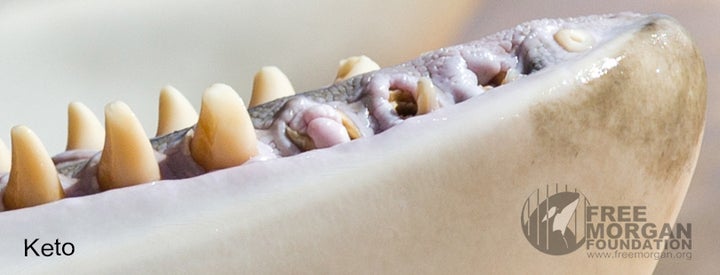
SeaWorld’s CEO Joel Manby has been all smiles since he and Wayne Pacelle, CEO of The Humane Society of the United States announced that their organizations had reached an agreement to end the captive breeding of killer whales at SeaWorld’s parks in California, Texas and Florida along with the six killer whales under SeaWorld’s care at Loro Parque in Spain. But when it comes to the killer whales themselves, they’re not smiling because there is something missing - their teeth.
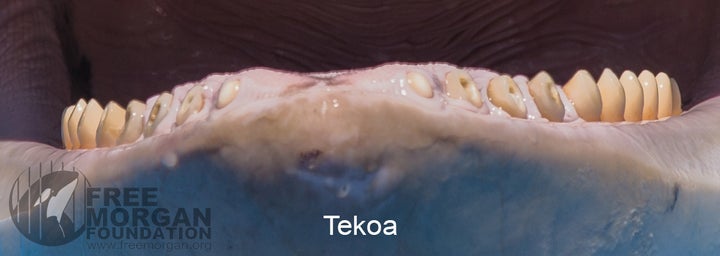
Dentition as a Welfare Indicator
Do you remember going to the dentist as a child for a checkup? Do you remember how happy you were if you didn’t have any cavities? Do you remember the sound of the dentist’s drill when you did?
A new report from the Free Morgan Foundation (FMF) examines the condition of killer whale teeth as a measure of their welfare in captivity. The report, Ongoing concerns regarding the SeaWorld orca held at Loro Parque, Tenerife, Spain provides extensive photographic documentation that chronicles the dentition of the six killer whales in SeaWorld’s care at Loro Parque. Based on the report, it appears that cavities are the least of their problems.
The authors of the report, Dr. Ingrid Visser and Rosina Lisker, visited Loro Parque in April of this year where they observed and photographed the killer whales over a period of three days. During their visit, Visser & Lisker received personal assurances by Dr. Javier Almunia of the Loro Parque Fundación and two Loro Parque veterinarians, that there were no health problems with the killer whales.
When specifically asked about the wild-born female Morgan, the authors were told she had no broken teeth:
“All three employees denied that Morgan had any broken teeth. Subsequent to the authors’ visit, on 28 April 2016, Loro Parque posted on their official website blog the following text; “Dr. Visser asked about Morgan’s broken teeth, and the veterinarian staff confirmed that Morgan does not have broken teeth just abrasion in [sic] some of them.” [emphasis added].” (Visser & Lisker at p. 16.)
The photographic evidence collected by Visser & Lisker, however, adds to the growing stack of documentation regarding welfare issues facing the killer whales held in that facility.
Morgan is of particular concern to Visser & Lisker because during her time in captivity beginning at Dolfinarium Harderwijk in 23 June 2010 and then at Loro Parque since 29 November 2011, she has suffered significant, progressive dental distress that would not have occurred had she been returned back to the ocean following her rehabilitation:
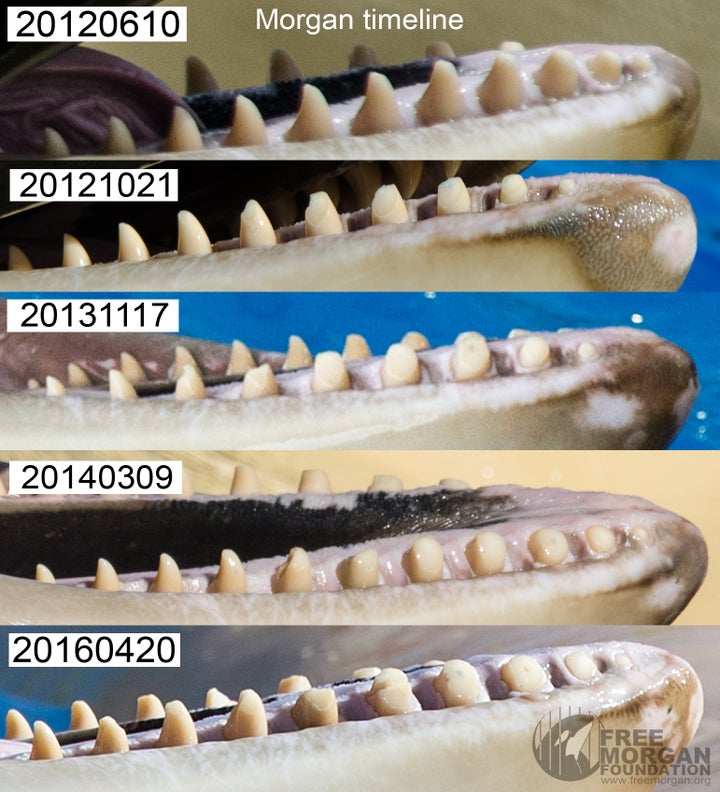
According to the authors, in 3 years, 10 months, 10 days, Morgan went from 0% severe damage of her right mandibular teeth to 75%. The report goes on to calculate that between 41.66% and 75% of the mandibular (lower jaw) teeth were moderately or severely damaged among the six killer whales observed at Loro Parque.
Drilling and Flushing – Superior Dental Care?
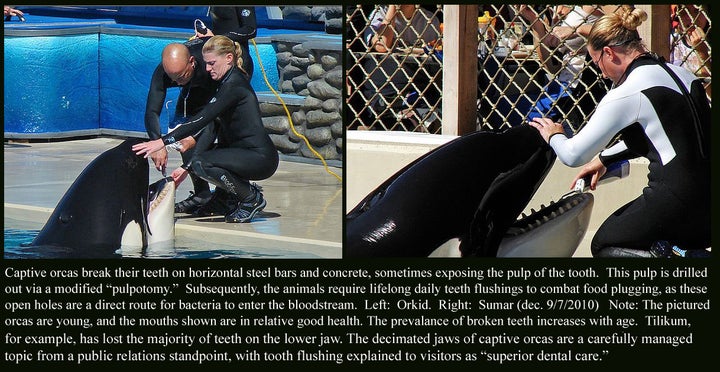
Drilling and daily flushing of killer whale teeth is portrayed as ‘superior dental care’ by Seaworld. But is it really? I asked former SeaWorld trainer John Jett Ph.D. to describe the daily dental care of killer whales from a trainer’s perspective:
“We used a variable-speed drill, with a stainless drill bit that was disinfected with betadine prior to the drilling procedure. It was a Dremel brand drill like you can buy at a hardware store. The holes were flushed using a Waterpik filled with betadine. We would receive cases of 1,000mL bags of betadine from the animal care department, which we would cut with scissors and pour into the Waterpik basin in preparation for tooth flushes.” (John Jett Ph.D. July 2016)
Another former SeaWorld trainer, Jeffrey Ventre MD, gives further detail about pulpotomies, tooth flushing and the health impacts of dentition of killer whales in captivity in this video:
Five Freedoms
The welfare issues at Loro Parque extend far beyond the killer whales teeth. Visser & Lisker also asses the welfare of the killer whales through an analysis and discussion of the physical conditions at Loro Parque with respect to the ‘Five Freedoms’ of animal welfare:
- FREEDOM FROM HUNGER AND THIRST.
- FREEDOM FROM DISCOMFORT.
- FREEDOM FROM PAIN, INJURY OR DISEASE.
- FREEDOM TO EXPRESS NORMAL BEHAVIOR.
- FREEDOM FROM FEAR AND DISTRESS.
These standards are internationally recognized as providing the absolute minimal requirement for an animal’s physical and mental well-being.
In the report, Visser & Lisker document violations of four of the ‘five freedoms’ of the killer whale’s welfare at Loro Parque. Their report also meticulously documents 23 violations of animal welfare standards affecting the killer whales at Loro Parque using the C-Well® welfare standards. (Visser & Lisker at p. 33.)
SeaWorld and the Humane Society
Wayne Pacelle is the CEO of HSUS, a position he has held since 2004.
Six years after he began working in that position, in November 2010, his organization wrote a letter to the US Government highlighting the animal welfare violations at Loro Parque. HSUS requested that the US Government act according to the letter of comity provision (the legal principle that nations will mutually recognize and respect each other’s laws) of the Marine Mammal Protection Act (MMPA). They requested to have the SeaWorld killer whales seized and repatriated back to the United States:
“Therefore, it is imperative that NMFS and APHIS undertake an immediate investigation and make an official finding as to Loro Parque’s non-compliance so that NMFS can take action to seize the orcas or work with SeaWorld to arrange for their repatriation to the United States.” (HSUS letter 11 November 2010.)
The revelations in the Visser & Lisker (2016) report are stark and startling and reaffirm the validity of the HSUS welfare concerns raised in November 2010 about SeaWorld’s killer whales at Loro Parque.
This new report by the FMF has also been submitted to representatives of the US National Marine Fisheries Service (NMFS) Office of Protected Resources
as a not so subtle reminder that it cannot wash its hands of responsibility for monitoring the conditions of the killer whales at Loro Parque through feigned ignorance and denial of readily verifiable facts and observable conditions.
The fact that SeaWorld keeps six of its claimed twenty-nine killer whales at an off-shore facility is a detail that is often overlooked, yet these individuals represent approximately 20 percent of SeaWorld’s entire killer whale collection.
Although Loro Parque is not owned by SeaWorld, the killer whales held there are ultimately under the care and responsibility of SeaWorld. Furthermore, as a consequence of the original transfer of four SeaWorld killer whales to Loro Parque in 2006, there is also a responsibility of the US Government pursuant to the MMPA to pay attention to the welfare conditions of the killer whales held at Loro Parque today. (See the FMF white paper on whale laundering.)
On 17 March 2016, SeaWorld and HSUS made an announcement - in partnership - that shook the very foundation of the marine theme park industry, setting in motion the beginning of a gradual phasing out of the commercial display of killer whales in captivity. But is that enough?
The HSUS policy position regarding SeaWorld’s killer whales at Loro Parque as expressed to the US Government in 2010 was powerful, principled and represented the humane mandate for the welfare of the killer whales, and of all animals, that the HSUS represents. It is a position that SeaWorld needs to fully embrace.
“SeaWorld has a moral and legal obligation to these animals and must act to secure their welfare. “ (HSUS letter 11 November 2010.)
Whether the HSUS partnership with SeaWorld will result in a softening of HSUS’s stance on the deplorable welfare conditions that continue to plague the killer whales at Loro Parque is uncertain. No doubt, it is an important question that will have to be answered by HSUS - preferably with actions rather than words.
To that end, the FMF sent an “open letter” to Mr. Manby and Mr. Pacelle asking them to meet with the FMF regarding the situation at Loro Parque and to discuss a long term commitment to work together to return Morgan to the ocean in a controlled, natural environment. To date, neither Mr. Manby or Mr. Pacelle have responded to the FMF invitation to talk.
Morgan as Her Own Best Advocate
Ever since being taken from the wild in 2010, Morgan has commanded the public’s interest in an international spotlight. Over the course of the last several months, Morgan’s plight has increased public awareness and outrage over the welfare issues facing her and other killer whales in captivity.
Two recent viral videos show Morgan ramming her head into a heavy metal segregation gate while being confined in a small medical tank and also show her “hauling-out” onto the main performance stage for an extended period after a performance. This was apparently in an attempt to escape the aggression of SeaWorld’s other killer whales who are also held with Morgan at Loro Parque.
The stories of these two events spread across social media and received mainstream coverage, including National Geographic, Time, People, The Dodo, HuffPost UK, and in this exclusive television interview with former SeaWorld trainer Dr Jeffrey Ventre on Sky News with Kay Burley.
For their part, SeaWorld and Loro Parque have gone to great efforts to try to spin the story about Morgan, claiming that she is healthy and doing well in captivity and that the recent videos show normal behavior. However, in fact, they are quite alarming and such a response underscores the paradox of perception by those who want to continue to profit from the captivity of these sentient beings and those who wish to put an end to it.
The Visser & Lisker report draws attention to the clear and obvious issues of Morgan’s teeth and explains why the damage is due to confinement in a concrete tank. This report and Morgan’s plight continues to gain international attention with new in-depth articles about Morgan appearing in the Dutch news magazine Vrij Nederland and German newspaper Donaukurier in August.
Pain Relief?
The images of the killer whales teeth in the report speak for themselves.
They are graphic, indisputable and universally recognizable as “painful” to any person who has had a cavity, chipped, broken or lost a tooth, or had a tooth drilled by a dentist.
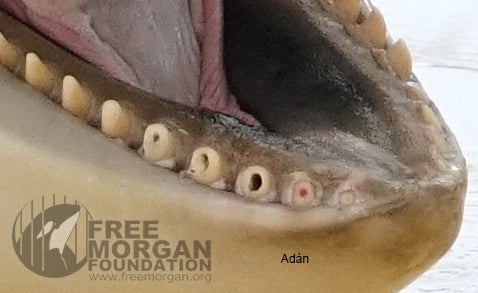
These latest revelations about SeaWorld’s killer whales has the potential to take yet another bite out of the bottom line of the struggling marine theme park industry as it continues to struggle with a public relations campaign, trying desperately to distance itself from the Blackfish effect.
On 4 August 2016, SeaWorld Entertainment, Inc. (NYSE: SEAS) reported its financial results for the first half and second quarter of 2016. The results were not encouraging for investors. One analyst even suggested that SeaWorld should reinvest in the business, pinning its hopes on the addition of new roller coasters - not killer whales.
The world is rapidly changing and national and international laws and regulations and the government entities that are entrusted to enforce them, need to catch up to society’s expectations and demands. What happens next is anyone’s guess. But one thing is for sure, the Visser & Lisker report gives both government regulators and marine theme park executives something to chew on.
(Author’s note - Matthew Spiegl serves on the Board of the Free Morgan Foundation.)
